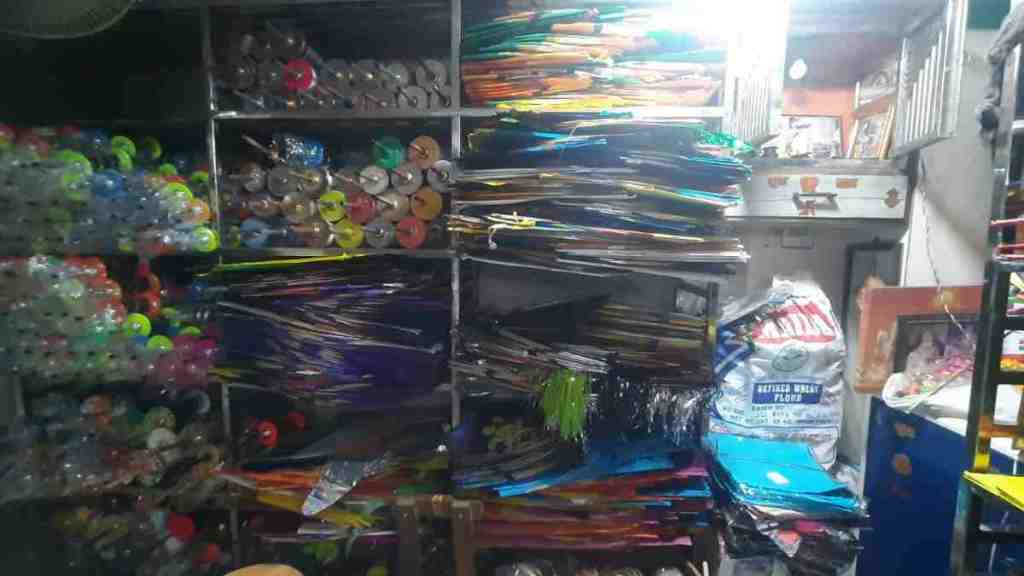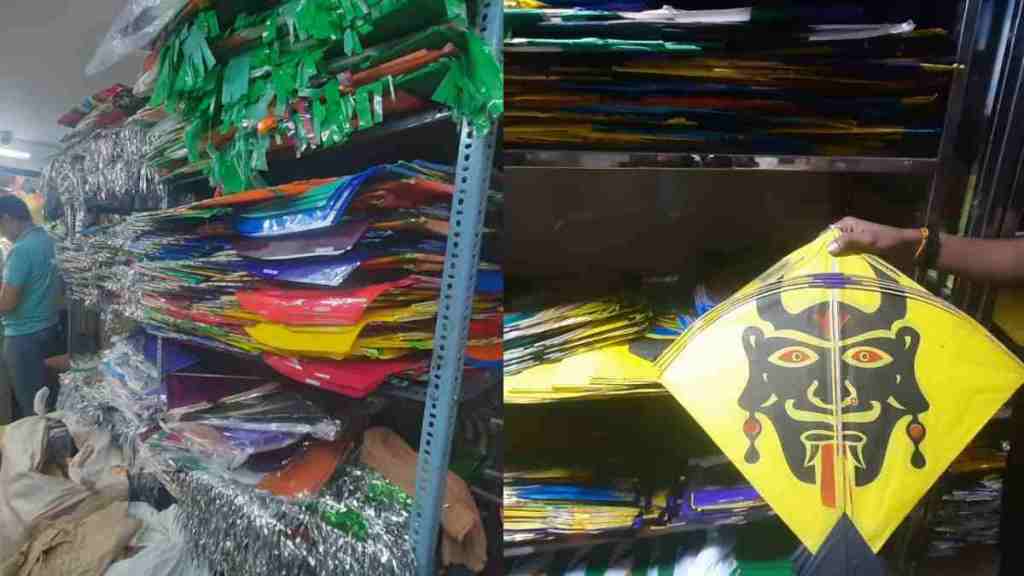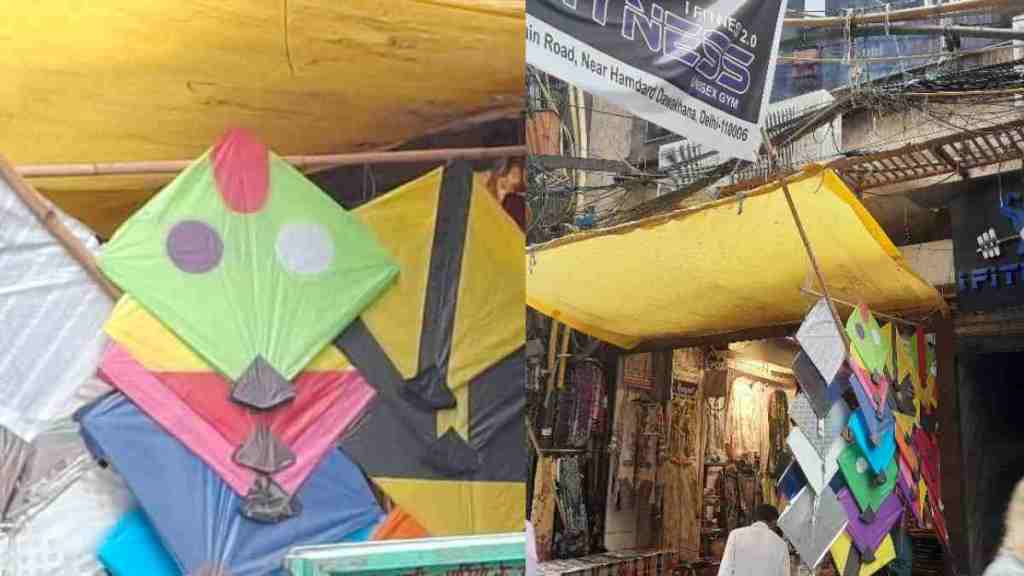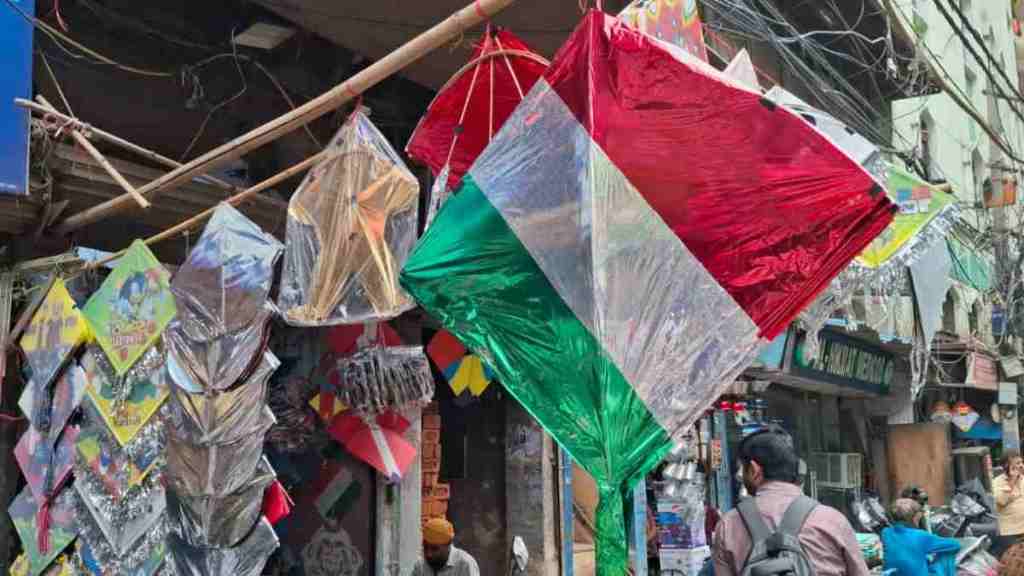Killer Strings In The Sky! How Banned Manjha Still Rules As People Flout The Ban With Impunity News24 –
Twenty two-year-old Yash Goswami was returning home on his scooter one evening on Delhi’s Rani Jhansi Flyover, and suddenly, he fell off his scooter, and later died on the spot. Had a flat tyre or skidded? Oh No! The cause of his unexpected death is shocking, and surely avoidable. But, the tragedy is, deaths like of Yash continue unabated due negligence and utter disregard for warnings and alerts issued by administration.
Yash died on the spot when he rode into a ‘killer thread’ used to fly a kite, and it slit his throat. Media reports on that incident last month quoted bystanders as saying, “another one gone”, as patangbaazi takes another life.
The culprit in this instant case was “chinese maajha” a thread laced with glasspowder and other abrasive materials used for flying kites competitively, especially during Makar Sankranti and August 15, Independence Day, across the country, but more so in Northern India.It is not that only Chinese Maanjha is dangerous, all other threads specially made for flying kites at places like Bareilly, are also equally deadly in their dangerous threat they pose.
Yes, as many people who have played with kite during childhood and later youthhood too, are familiar with the loud cheers, ‘ye kaata, woh kaata’ that resonate as the “kite gladiators” take on each other, and the battle witnesses the loser’s kite floating away, cut off from the tread that makes soar and dance in the skies.
But, these happy tidings also bring about a darker, bloodier, tragedy when the kite flier loses control and the kite and or kite thread encircles unsuspecting people, and or those on two-wheelers, and often leading to serious injuries or deaths. What the eyes fail to see behind the celebrated festivity of a sky full of kites are injuries, death, and grieving families.
In recent years, many people have died in kite-flying-related mishaps. A spate of tragedies continue to unfold across Delhi, Uttar Pradesh, and neighbouring states. Look at this for example: Four people in Gujarat, and one each in Mumbai and Madhya Pradesh, fell victim to Chinese manjha last year during Makar Sankranti festival. A farmer from Maharashtra’s Nashik had to undergo 150 stitches to close a deep cut to his neck. He was lucky that he survived. But a seven-year-old boy was killed by the banned kite string in Dhar city, Madhya Pradesh, when he was riding on a two-wheeler along with his father.
A ban imposed on glass-coated thread, in operation since 2017, has miserably failed to check this killer menace, as most often it is observed in its breach rather than in its practice.
Avoidable deaths continue due to this reason. Why, in January 2025, Gujarat alone witnessed15 deaths and hundreds of injuries during Makar Sankranti. A 37-year-old woman passed away at a hospital in Ahmedabad after a kite string cut deep in her neck while she was riding her bike.
From The Narrow Lanes Of Bareilly To The Streets Of Delhi
Now lets take a look at the narrow lanes of Bareilly, where high-quality manjha is manufactured and traded across North India. For generations, the many families of Bareilly town and its neighbourhood have mastered the art of making manuals and their noble fingers move with precision and purpose to churn out hundreds of lakhs of meters of these deadly threads every year.
“Our three generations did this – my grandfather, father, and now my sons are doing this. Our soft and delicate manjhas don’t harm, they don’t kill,” said 60-year-old local kite manufacturer Ahmed Khan. Another manufacturer from Bareilly told News24 over phone, “Jab koi humare maanjhe se patang udayega tab use fark pata chalega. Door door se log kharidari karne aate hai.” (Anyone who uses our threads to fly the kite, they will know the difference). He said proudly to declare the power and popularity of their produce.

Their specially manufactured threads are sought after in many cities and towns, as the craze of kite flying, sometimes seasonal, takes over with hundreds of thousands of kite soar into the sky, presenting a lovely picture up above but posing a threat down the ground.
Despite ban, in many cities the threads are sold, with the authorities looking the other way. A visit to the Delhi’s Sadar bazaar can be very revealing. On prodding and pleading, the shopkeepers can sell you the maanjhas that the authorities do not want to be sold.
Voices From Sadar Bazaar: What The Shopkeepers Say?
At Delhi’s bustling Sadar Bazaar, shopkeepers claim that they follow the rules and don’t sell Chinese Manjha. Most shopkeepers refused to speak to News24 and clamoured up on the kind of manjhaas they sell.
Nitin, who works at Bishan Chand Trading Co. at Lal Kuan, however, has a completely different story to tell. “Hamara trading ka kaam hai saara. Maanjha jo hota hai na vo cotton ka bikta hai. Vo bareilly ka famous hota hai isliye bareilly ka hi chalta hai. Vaha atmosphere ki baat alag hoti hai, isliye vahi ka best hota hai aur kahi nahi ban sakta. Aap sochoge ki Delhi mein ban jayega phir bik jayega toh aesa nahi hota,” he said, on the speciality of the threads manufactured in the Mecca of thread-making in North India. (Our entire work is trading. The cotton material used in Manjha is famous in Bareilly, so only Bareilly-made threads are sold. The atmosphere there is different, which is why it’s the best, and it can’t be replicated elsewhere. If you think it can be made in Delhi and then sold, it doesn’t work like that.)

Nitin added, “Jagah bhi bhut chahiye hoti hai manjha banane ke liye, manufacturing unit ke liye. Bareilly ka hi manjha bikta hai, chalta bhi vahi hai. Beech mein plastic ka aata tha par ye toh banned item hai. Hum yaha pe rakhte bhi nahi hai, kaafi nuksaan hai. Cotton ke manjhe se toh aaj tak kabhi kisi ko chot nahi laga. Bareilly ke manjhe se toh aaj tak hota rehta hai.” (A lot of space is also needed to make Manjha, for the manufacturing unit. Only Manjha from Bareilly is sold, and that’s the one that’s in demand. There used to be a plastic one for a while, but it’s a banned item now. We don’t even keep it here, there’s too much risk. No one has ever been hurt by cotton Manjha till date. Even today, it’s the Bareilly Manjha that causes injuries.)

“Unke Ladke Bahar Khade Rehte Hai, Vo Criminal Type Hote Hai”
What Nitin mentioned next is concerning. “Chori chupe koi dukaandar Chinese Manjha toh sale karta nahi hai. Abhi 15 August ka season hai…other state se laake jo yaha pe bech lete hai….jese Punjab side se mangva liya aur alag state se manga liya, vo sale krte hai, vo criminal type ke hote hai. Jese humare dukaan par agar customer aaye aur puche ki plastic ka manjha mil jayega toh hum mana kar dete hai. Magar bahar hi unke ladke khade rehte hai aur puchte hai ki han bhai plastic ka chahiye aur badnaam yaha ke Delhi vale dukaandar ho jaate hai, market ho jaati hai.” (No shopkeeper sells Chinese Manjha secretly. Now it’s the 15th August season…They get it from other states and sell it here, like from the Punjab side and other places. They’re the criminal types. For example, if a customer comes to our shop and asks for plastic Manjha, we say no. But their boys stand outside and ask, ‘Yes, brother, do you want the plastic one?’ and then the Delhi shopkeepers get blamed, and the market gets a bad name.)
“Yeh Humari chothi peedhi ki dukaan chal rahi hai – fourth generation,” (this shop has been run by our family for four generations – we’re the fourth generation), Nitin concluded while gently placing the tricolor kites in the display rack.

“Cotton Manjha Ki Quality Utni Achi Nahi Hai”
However, opinions fly as freely as the kites. Another shopkeeper at Lal Kuan, Mohammad Asim, had a different story. He scoffed, “Chinese manjha toh ban hai, hum bech nahi sakte. Humare pass cotton manjha hai jo aasani se toot sakta hai, quality utni achi nahi hai.” (Chinese manjha is banned, we cannot sell it. We have cotton manjha, but it breaks easily, and the quality isn’t that good.)
The contrast between what the shopkeepers said reflects a large debate. While the strong manjhas, which are dangerous, act as a weak link in competitive kite-flying, the cotton manjha keeps the spirit of the sport alive. But the problem is not just about what’s being sold but about why people are still able to buy banned razor-sharp Chinese Manjha.

Crackdown Reveals Illegal Supply Chain
The Delhi Police’s Crime Branch unit, in multiple crackdowns, has seized a large consignment of Chinese manjha from different parts of the national capital. Recently, a team of officials raided an area near Milan Garden in Mandoli and recovered a total of 660 kite string rolls. The accused, residents of Muradnagar in Uttar Pradesh, had been secretly supplying the banned manjha for a long time. The deadly glass-coated strings, sold under different names, have led to over 1,800 reels being seized by the city police since June 26, 2025, as per reports. Similar actions have been taken by other police departments in different cities and towns too. But, then, clearly they dont seem to have had much impact on either the trade or the number of deaths.
The Spirit Of Kite-Flying Lives On
Despite the dangerous, kite flying poses to people at large, the “sport’ itself thrives.
For many people, kite-flying isn’t just a pastime but a cherished memory. Amid the tragic news of accidents due to kite flying, there are light moments that rise with each fluttering kite. Satish Kumar, a customer at Bishan Chand Trading Co., said, “Mein inke Lala ji ke pass…Dada ji the Bishan Kumar Gupta, unke pass mein 1960 se patang lene aa raha hun. Ab meri age 74 hai, abhi tak mujhe shauk hai aur doctor ne bhi allow kar rakha hai mujhe. Chest problem hai, blockage hai, doctor ne patang udane ke liye kaha hai, shaam ko exercise ke jariye karo bola hai.” (I’ve been coming to his Lala ji… His grandfather, Bishan Kumar Gupta. I’ve been coming here to buy kites since 1960. Now I’m 74 years old, and I’m still fond of it. Even the doctor has allowed me to continue. I have a chest problem, there’s a blockage, and the doctor told me to fly kites as a form of evening exercise.)
The elderly customer gave a nostalgic smile, further adding “Aese mere pass 25-30 charkhi hai ghar pe aur 15-20 bag hai, usmein Guddiya collection kar rakhi hai.” (I have 25–30 charkhis (kite reels) at home and 15–20 bags – I’ve collected Kites in them.)
As kite sellers and manufacturers share stories spanning five to six decades, their voices remind us that the tradition of kite flying does not fade – it only evolves. But what is definitely needed is a collective responsibility, greater safety awareness, and stricter enforcement, said a retired law enforcement officer, echoing the sentiments of many.

ALSO READ: Exclusive: Telugu Actor Satyadev Kancharana On His Challenging Role As A Fisherman Straying In Pakistan In Amazon’s Arabia Kadali

